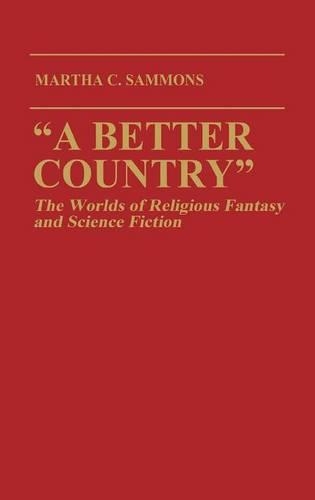
"A Better Country": The Worlds of Religious Fantasy and Science Fiction (Contributions to the Study of Science Fiction and Fantasy)
(Hardback)
Publishing Details
"A Better Country": The Worlds of Religious Fantasy and Science Fiction (Contributions to the Study of Science Fiction and Fantasy)
By (Author) Martha C. Sammons
Bloomsbury Publishing PLC
Praeger Publishers Inc
24th February 1988
United States
Classifications
Tertiary Education
Non Fiction
823.087609382
Physical Properties
Hardback
170
Description
This book is a study of religious science fiction and fantasy in the tradition of Lewis and Tolkien. Sammons explores why writers use fantasy to convey theology. In addition, the book provides a theoretical understanding of fantasy as a form of literature by examining the techniques of current writers in light of the goals and theories of the founders of the genre. Sammons discusses techniques such as supposition, transposition, imagery, and reader participation, along with the themes and ideas they convey. The author traces the chronological development of the genre and the characteristics and effects of religious fantasy with a wealth of examples.
Reviews
Sammon's book is a study of the theory of the Christian fantasy novel, based primarily on criticism by C.S. Lewis, J.R.R. Tolkien, and G.K. Chesterton, but with a number of current writers, including Madeleine L'Engle, also cited. Inside this framework, Sammons--the author of two books on Lewis--uses examples of modern writers, some from religious. Passing comments indicate the didactic heaviness and poor artistry of some of these writers, but Sammons is interested in the theory of the genre, not the achievement. Fantasy of the adventures-in-another-(symbolic)-world type gets four chapters (1-3,6); two chapters are mixed, with topics including fairy tales, science fiction, and animal fables. . . Recommended for religious colleges with writing programs and for public libraries. . .-Choice
"Sammon's book is a study of the theory of the Christian fantasy novel, based primarily on criticism by C.S. Lewis, J.R.R. Tolkien, and G.K. Chesterton, but with a number of current writers, including Madeleine L'Engle, also cited. Inside this framework, Sammons--the author of two books on Lewis--uses examples of modern writers, some from religious. Passing comments indicate the didactic heaviness and poor artistry of some of these writers, but Sammons is interested in the theory of the genre, not the achievement. Fantasy of the adventures-in-another-(symbolic)-world type gets four chapters (1-3,6); two chapters are mixed, with topics including fairy tales, science fiction, and animal fables. . . Recommended for religious colleges with writing programs and for public libraries. . ."-Choice
